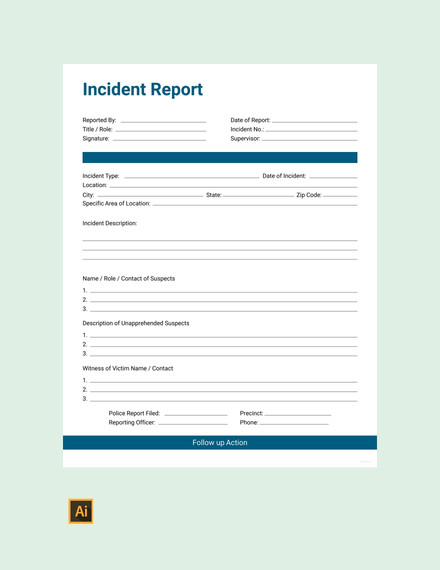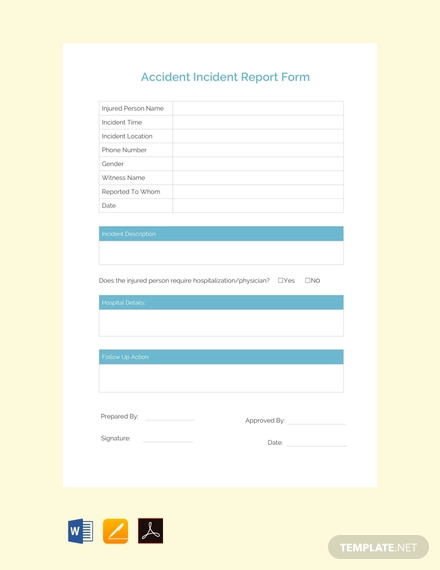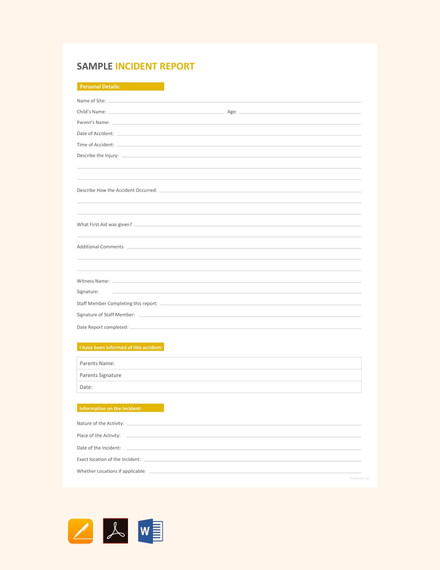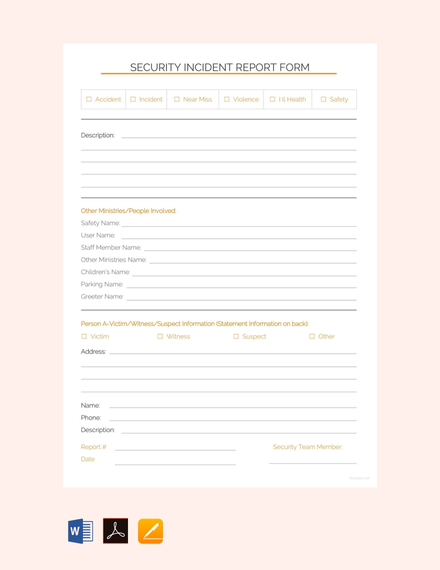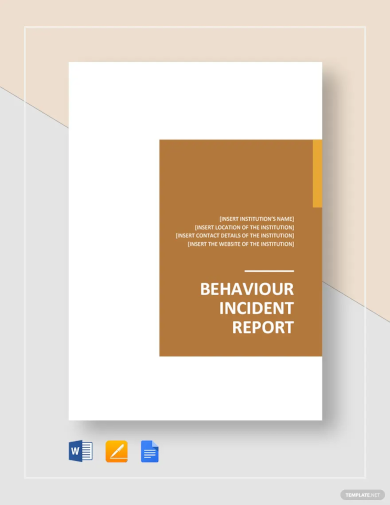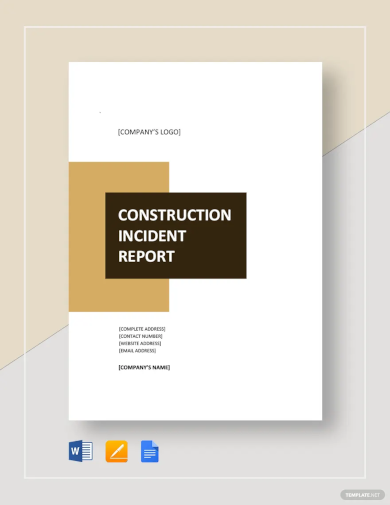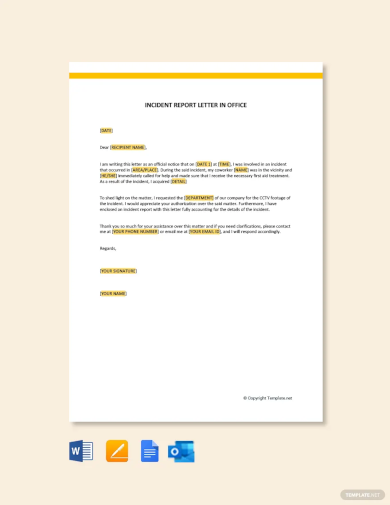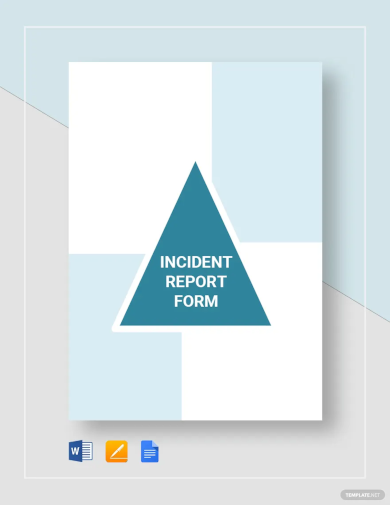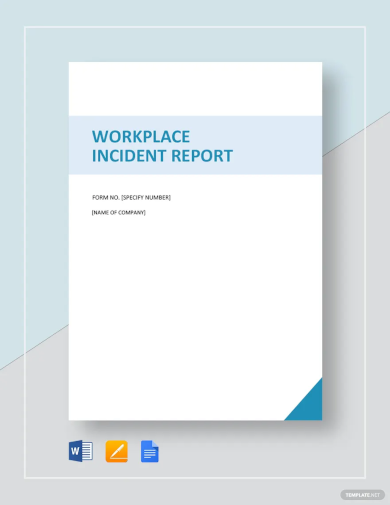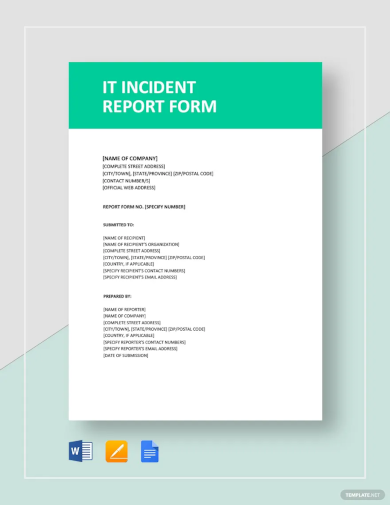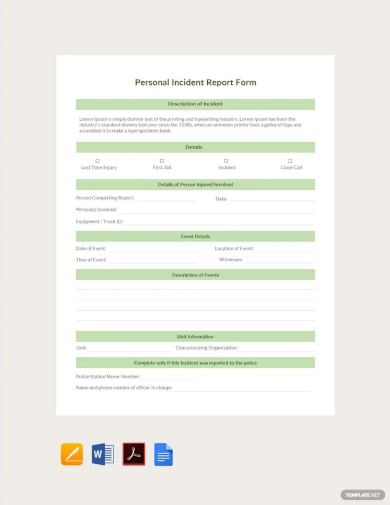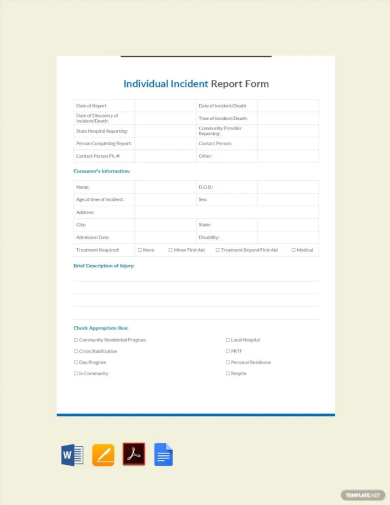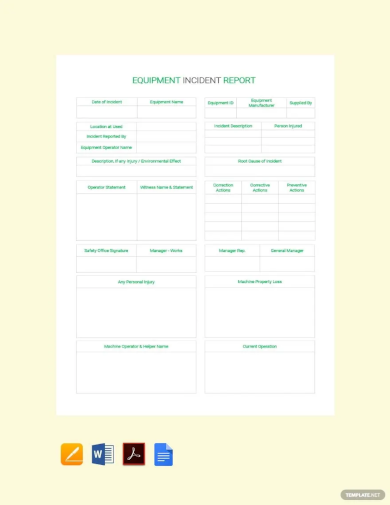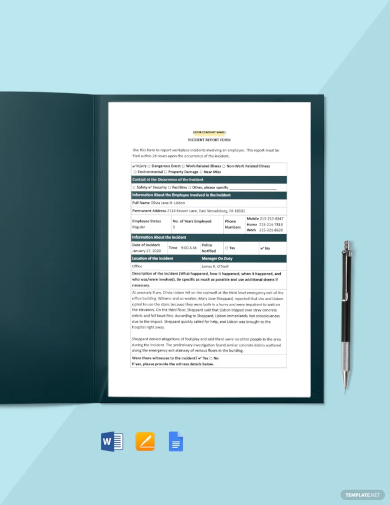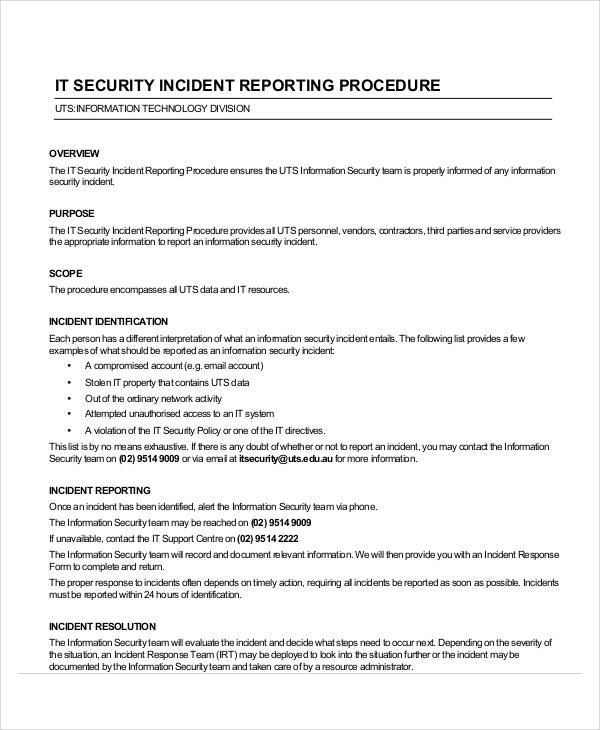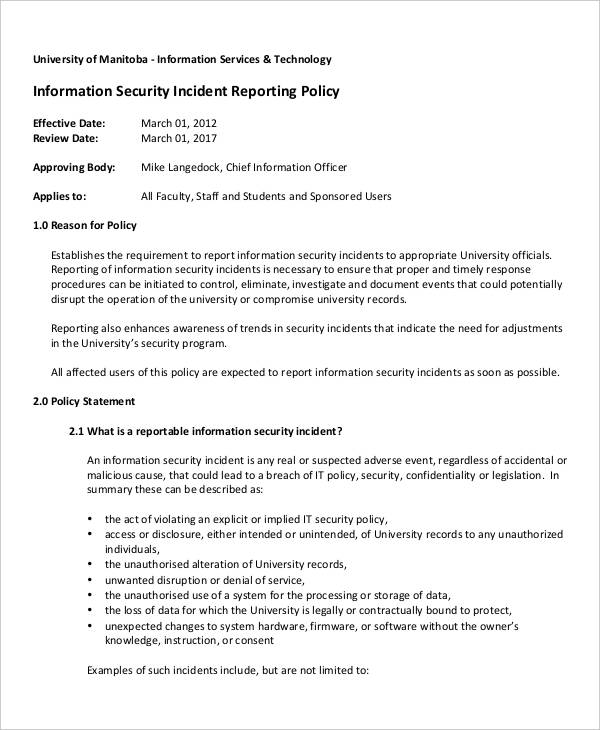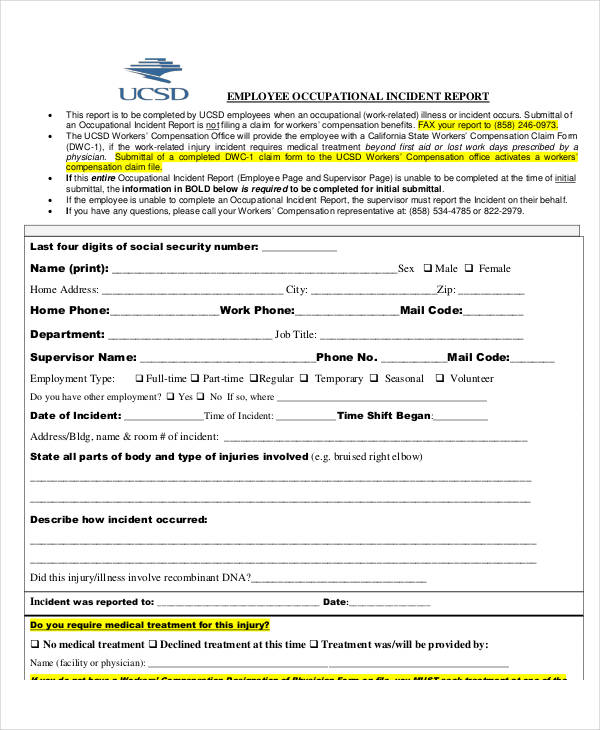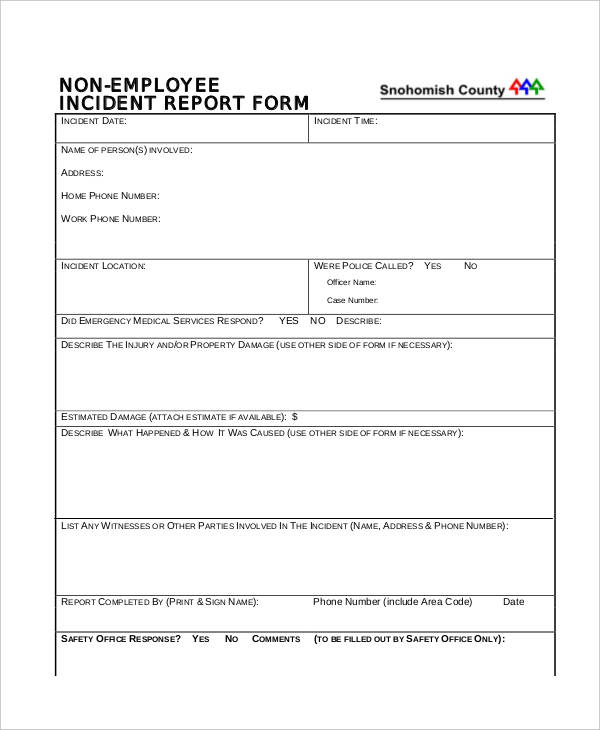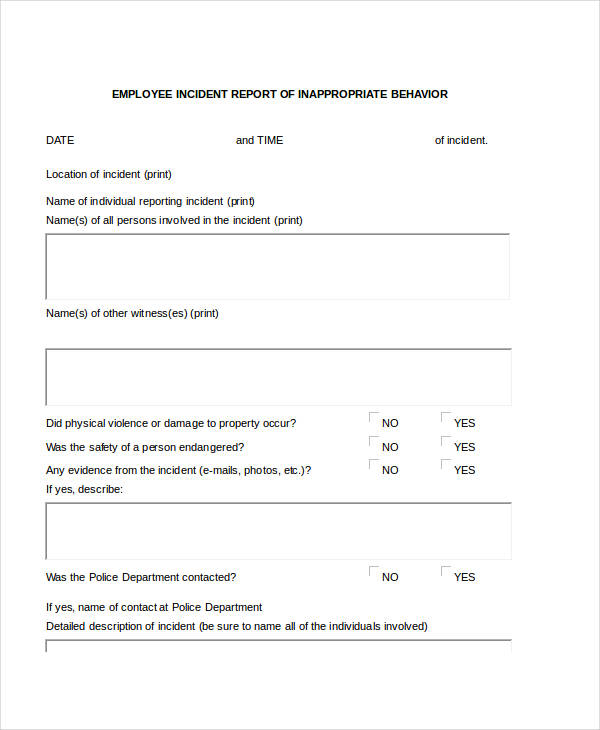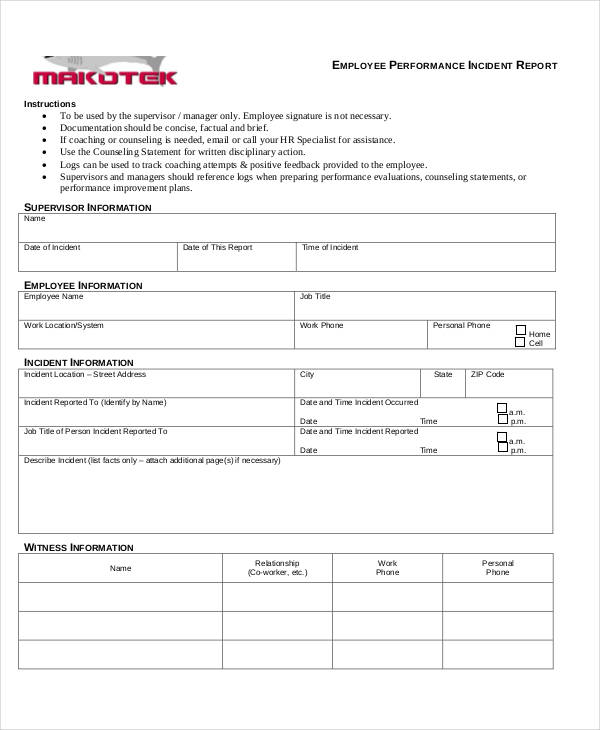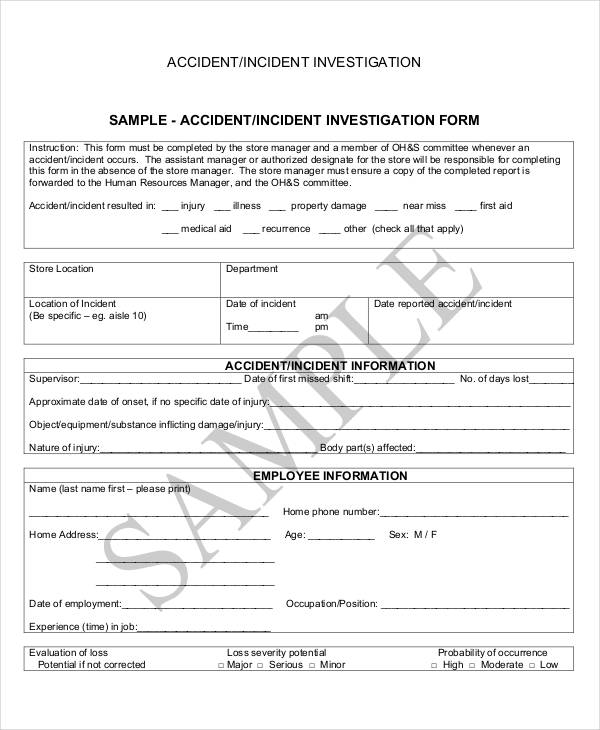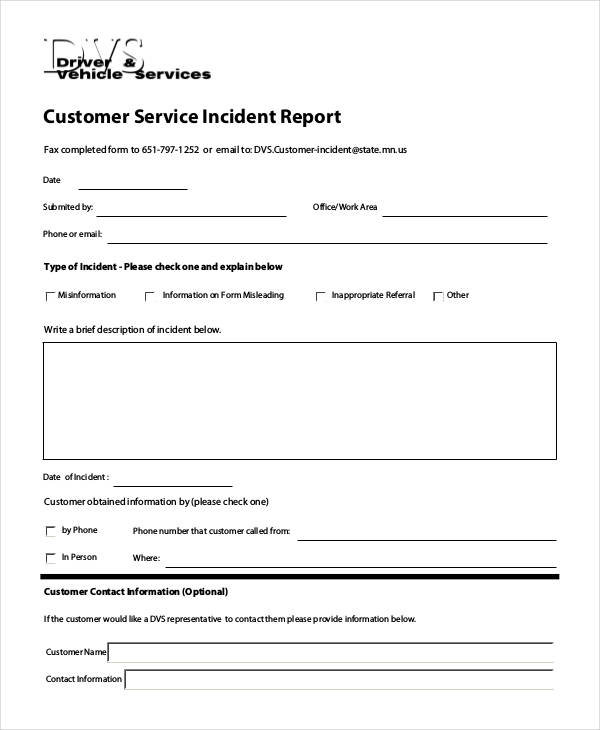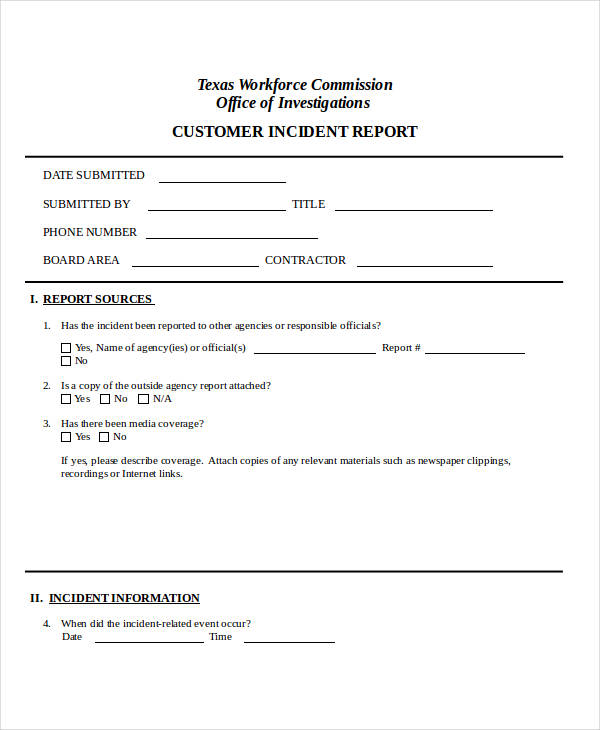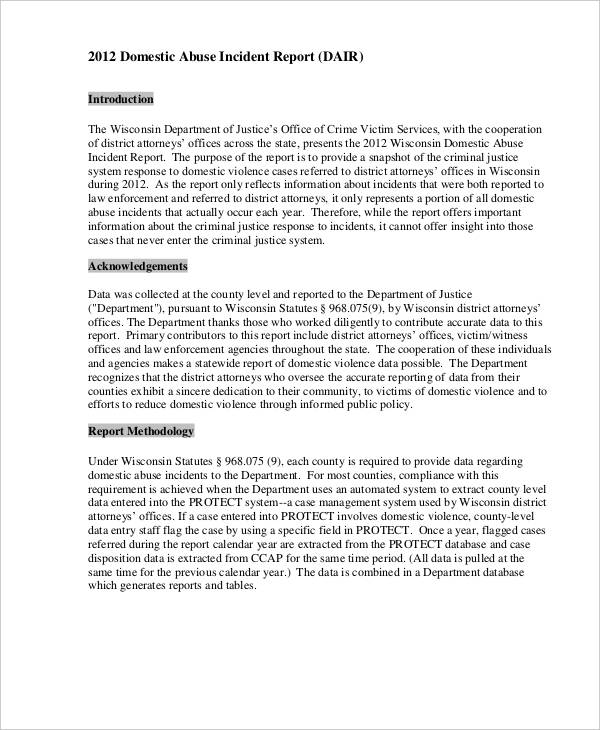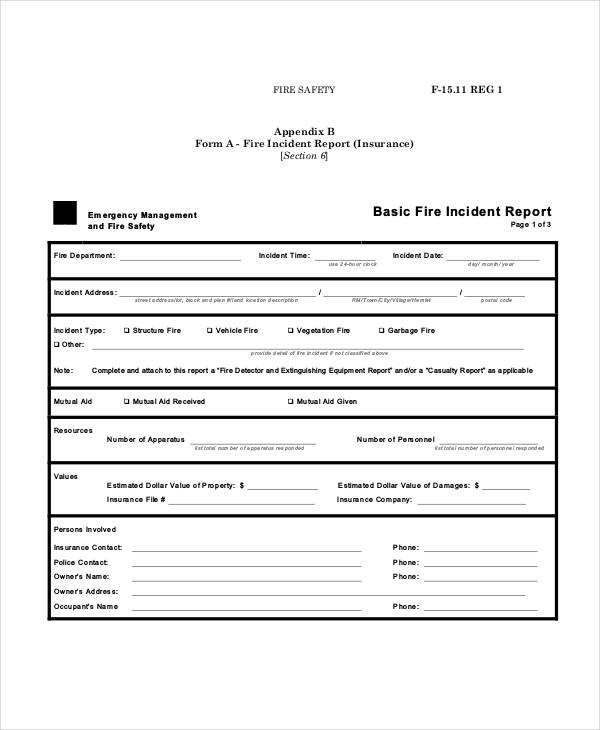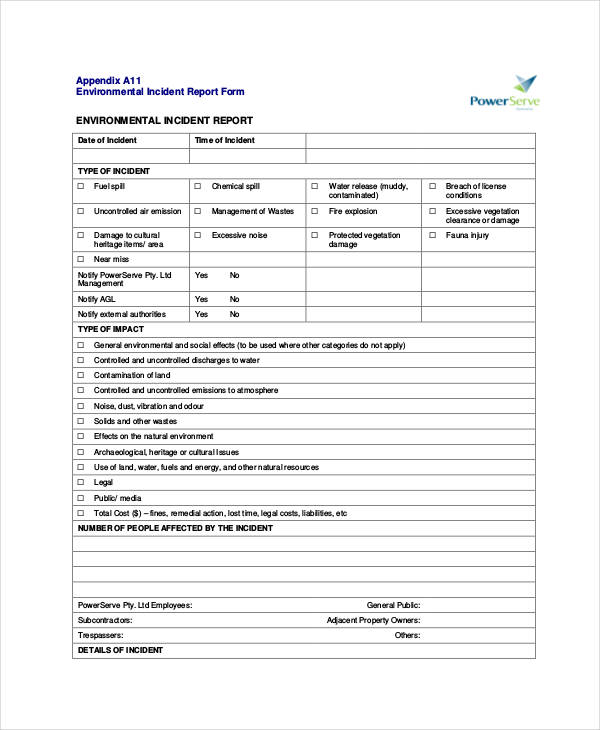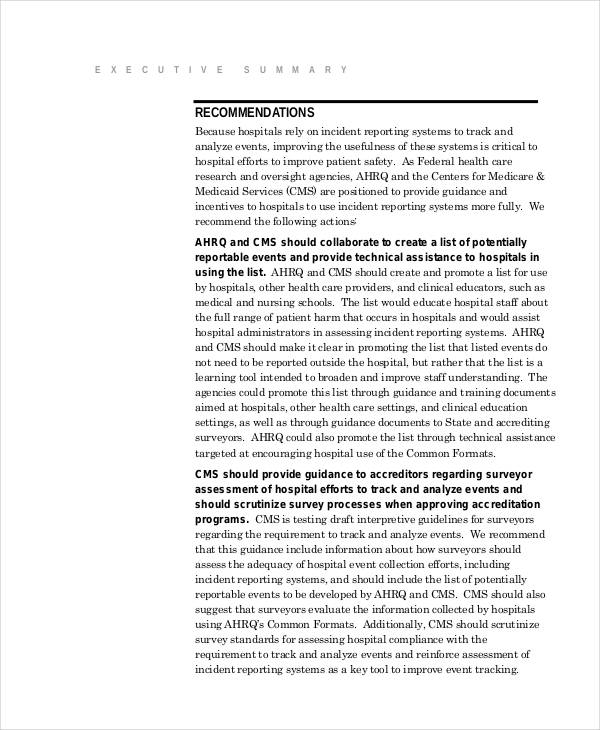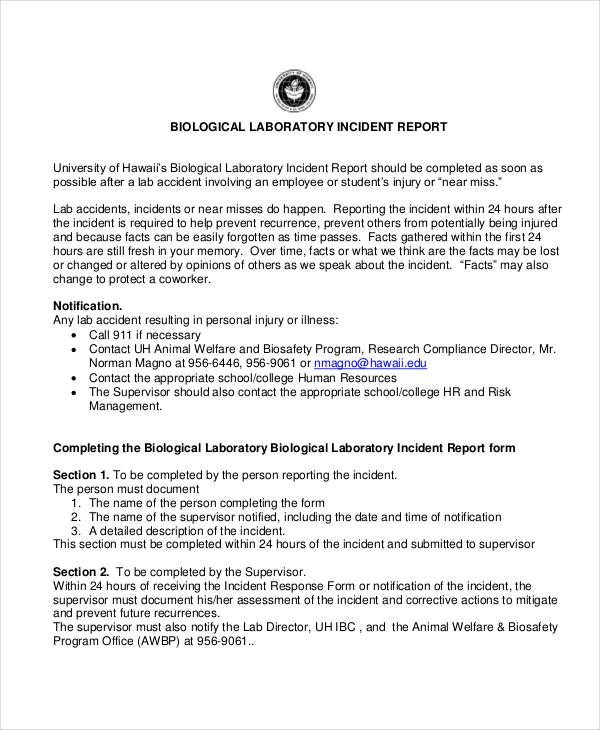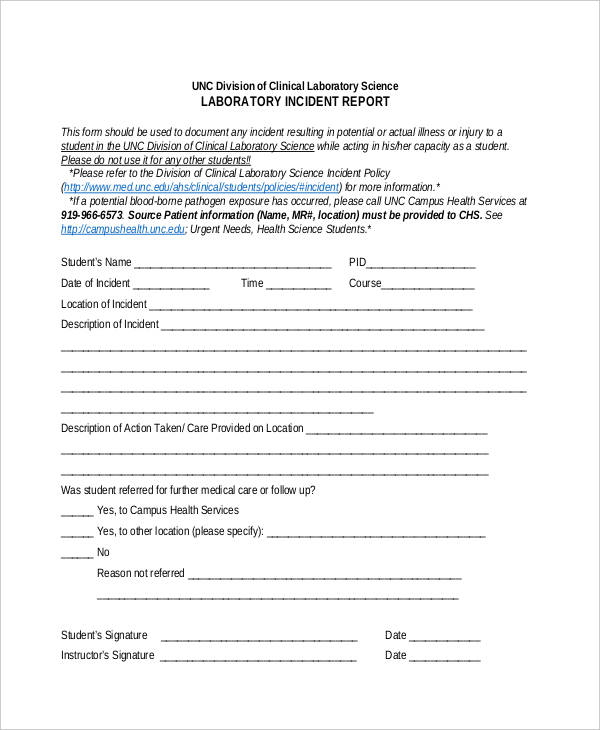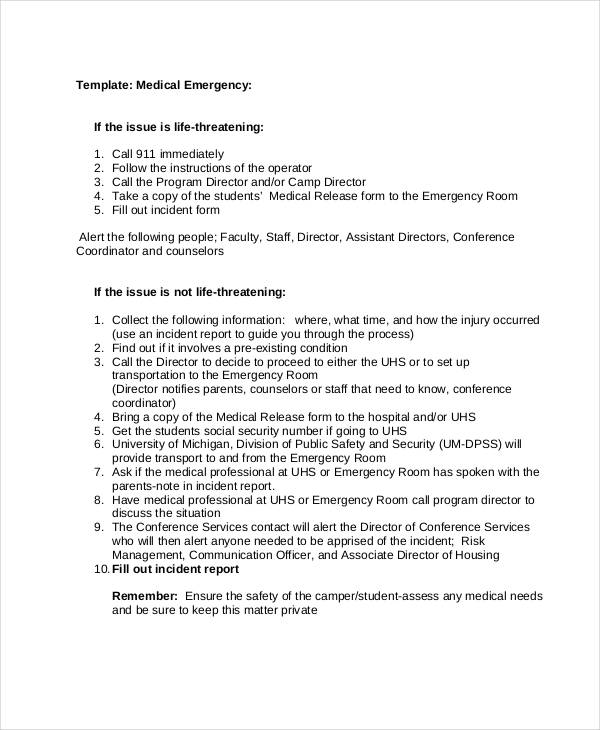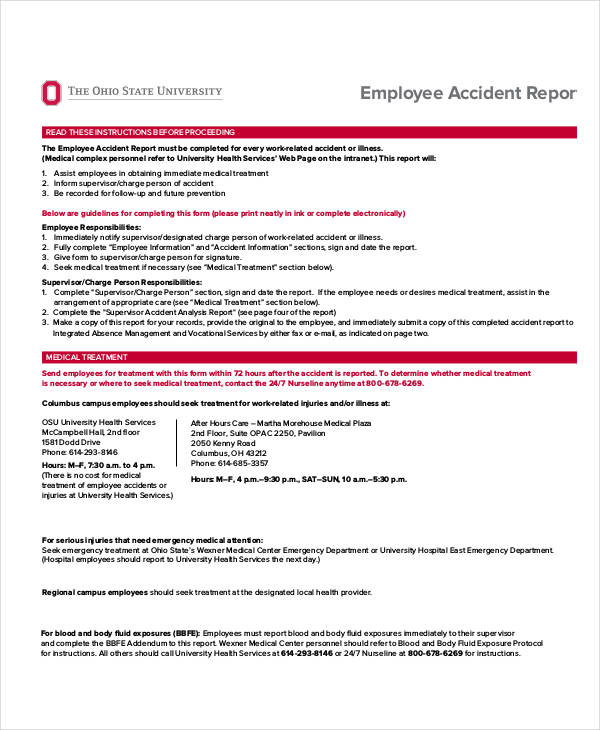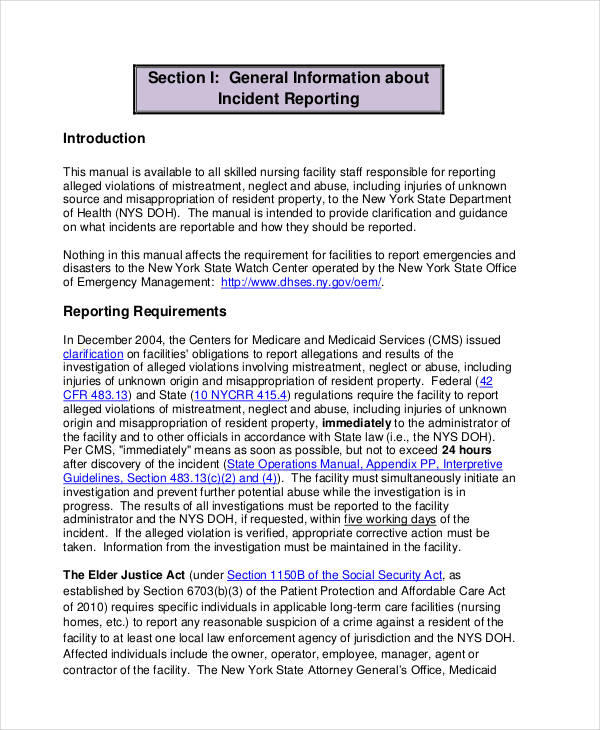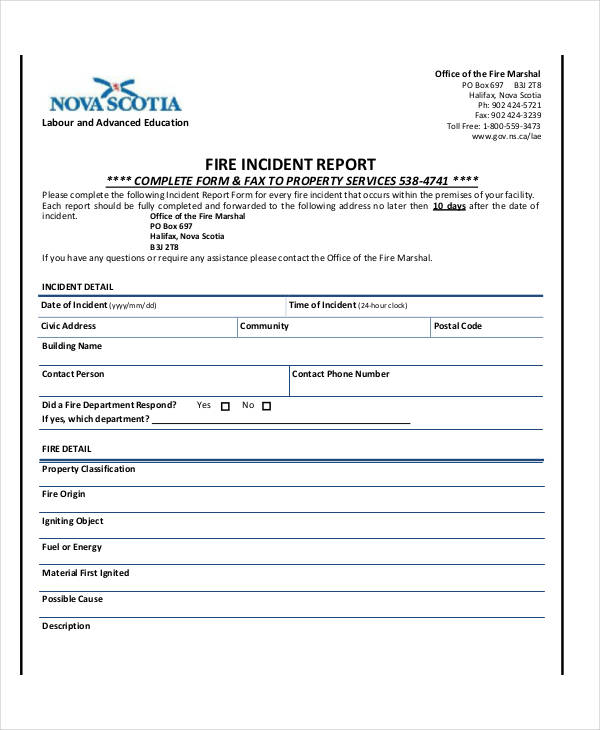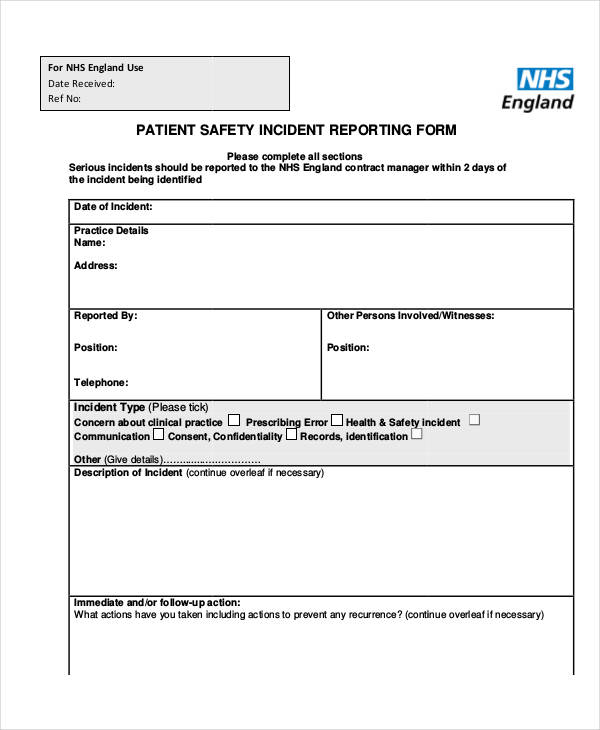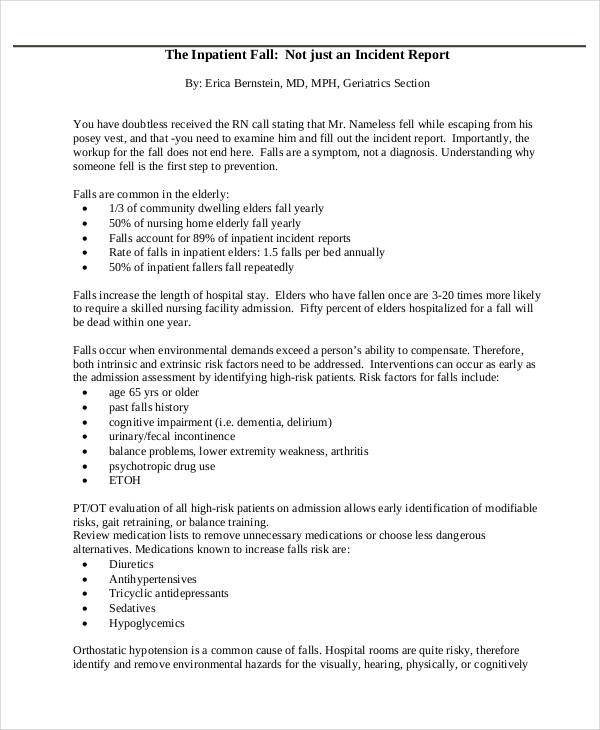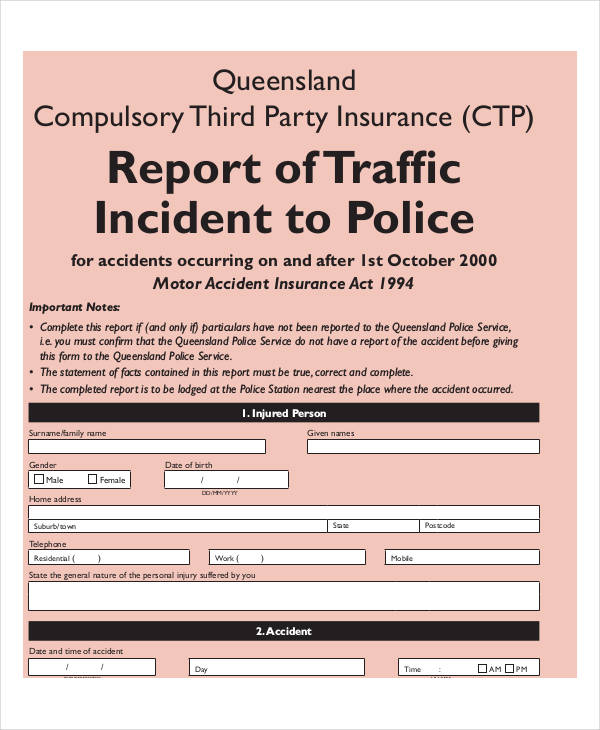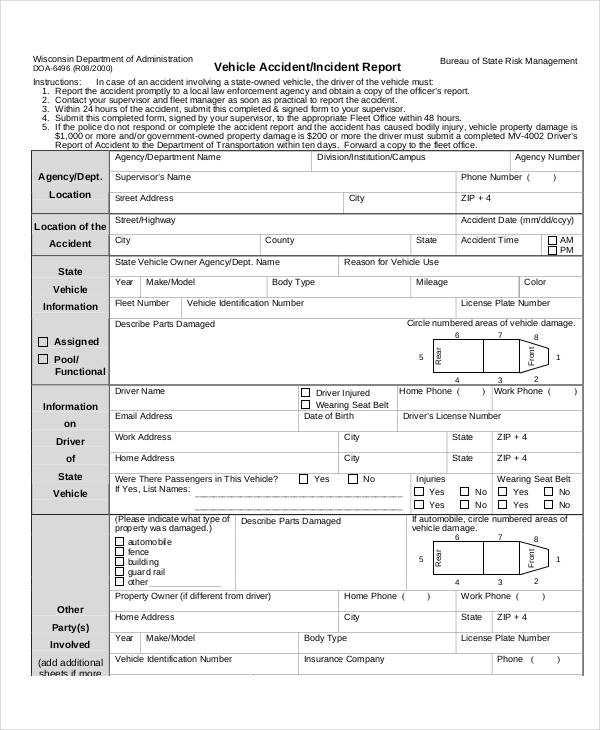58+ Incident Report Examples to Download
Incident reports serve as documentation of specific details and circumstances of an occurrence or event in the workplace or another venue. Such information is usually used in the event of reviewing the specifics related to the incident or when dealing with liability issues caused by the incident. You may also see Examples of Business Report
Incident reports are required to be filed immediately after the event to ensure that the details involving the incident are recorded accurately. Failure to file incident reports can sometimes lead to costly fines and penalties. Examples of incident reports can be downloaded below for your convenience so that you are able to save time and avoid penalties.you may also see Consulting Report Examples
What is an Incident Report?
An incident report is a formal documentation of the facts related to an unexpected or unplanned event in the workplace or any other setting. It provides a detailed account of what happened, including the date and location of the incident, the individuals involved, a description of the event, any injuries or damages that occurred, and the actions taken in response. The primary purpose of an incident report is to record the specifics of the incident to understand how and why it happened, to facilitate an investigation if necessary, and to implement measures to prevent similar occurrences in the future. Incident reports are crucial for maintaining safety, compliance, and improving processes within organizations.
Writing an effective incident report involves documenting the facts clearly and concisely to ensure accurate understanding and proper follow-up actions. Here’s a step-by-step guide:
1. Gather Immediate Facts
- Act quickly: As soon as an incident occurs, start gathering information to ensure accuracy.
- Identify: Note the date, time, location, and individuals involved.
2. Describe the Incident
- Be specific: Clearly describe what happened, focusing on facts. Avoid assumptions or opinions.
- Sequence of events: Present the events in the order they occurred.
3. Detail Injuries or Damages
- Injuries: Document any injuries sustained, including their nature and severity.
- Property damage: Note any damage to equipment, facilities, or goods.
4. Record Witness Statements
- Identify witnesses: List the names and contact information of witnesses.
- Collect statements: Include summaries or direct quotes from witnesses to support the facts.
5. Include Photographic Evidence (If Applicable)
- Visual evidence: Take photos or videos of the scene, injuries, or damages, if possible.
- Relevance: Ensure the visuals are directly related to the incident.
6. Document Actions Taken
- Immediate response: Describe any first aid, emergency services called, or temporary fixes applied.
- Notifications: Record who was notified about the incident (e.g., management, safety officers).
7. Analysis and Preventative Measures
- Root cause: Offer an initial assessment of how and why the incident occurred.
- Preventative actions: Suggest measures to prevent similar incidents in the future.
8. Review and Approval
- Accuracy check: Review the report for accuracy and completeness.
- Signatures: Obtain signatures from the reporter and, if possible, a supervisor or safety officer to validate the report.
9. Follow-Up
- Updates: Include any follow-up actions taken or outcomes of investigations.
- Changes implemented: Document any changes made to prevent recurrence.
10. Keep Records
- Filing: Ensure the report is filed appropriately for future reference and compliance purposes.
What is the Purpose of Incident Reporting?
The purpose of incident reporting encompasses several key objectives crucial for maintaining safety, compliance, and continuous improvement within organizations. Here are the main purposes:
- Documenting Facts
- Identifying Hazards
- Preventing Future Incidents
- Legal Compliance
- Improving Processes and Training
- Enhancing Communication
- Supporting Claims and Investigations
- Accountability and Transparency
- Monitoring Trends
- Promoting a Safety Culture
Incident Report Format
An effective incident report should be clear, concise, and include all relevant information about the incident. Below is a standard format to guide the drafting of an incident report:
1. Header Information
- Report Title: Incident Report
- Date of Report:
- Incident Date and Time:
- Location of Incident:
- Reporter’s Name and Contact Information:
2. Incident Details
- Type of Incident: (e.g., workplace injury, security breach)
- Description of the Incident: Provide a detailed account of what happened, including the sequence of events.
- Cause of the Incident: If known, describe the cause or contributing factors.
3. Persons Involved
- Name(s) of Individuals Involved: Include job titles if applicable.
- Witnesses: Names and contact information of witnesses.
4. Injuries/Damages
- Injuries: Detail any injuries sustained, including their nature and severity.
- Property Damage: Describe any damage to property or equipment.
5. Immediate Actions Taken
- First Aid or Emergency Services: Note any immediate medical or emergency services provided.
- Containment Measures: Describe actions taken to contain or mitigate the incident.
6. Investigation and Analysis
- Findings: Summarize the findings from any preliminary investigation.
- Root Cause: If determined, state the root cause of the incident.
7. Follow-Up Actions
- Corrective Measures: Detail any corrective measures taken or planned to prevent recurrence.
- Responsibility: Assign responsibility for implementing these measures.
8. Documentation
- Photos, Videos, and Documents: List any supporting documents or evidence attached.
- Additional Notes: Include any other relevant information not covered elsewhere.
9. Conclusion
- Summary: Conclude with a summary of the incident, outcomes, and future preventive strategies.
10. Signatures
- Report Prepared By: Signature and date.
- Review By: (If applicable) Supervisor/Manager signature and date.
30+ Incident report Samples
Incident Report Template
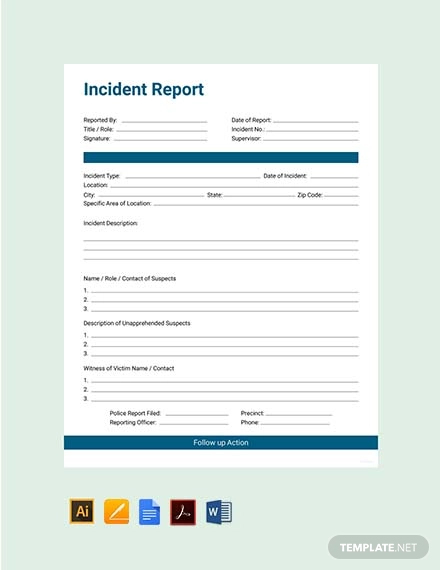
Employee Incident Report Template
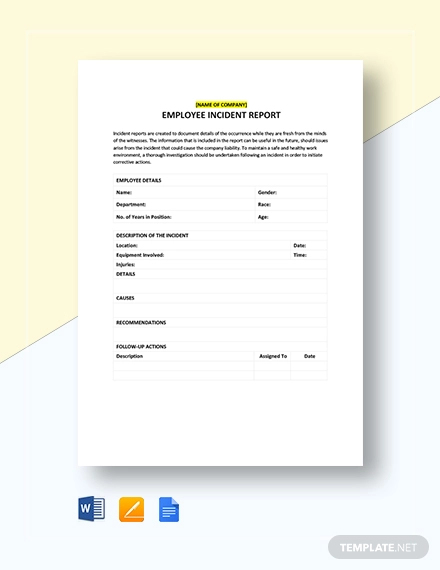
General Incident Report Template
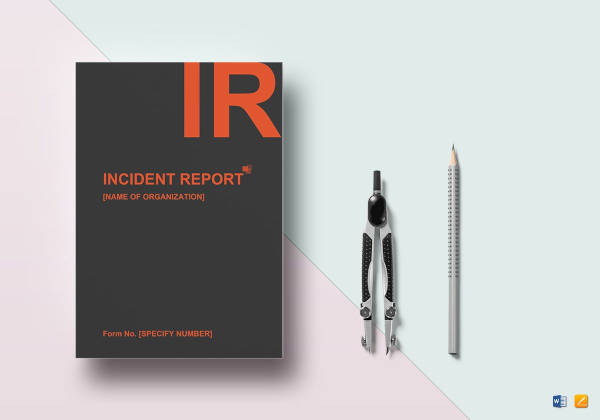
Blank Incident Report Template
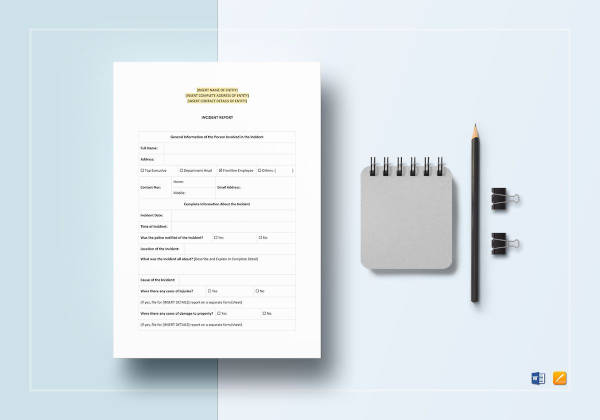
Construction Incident Report Template
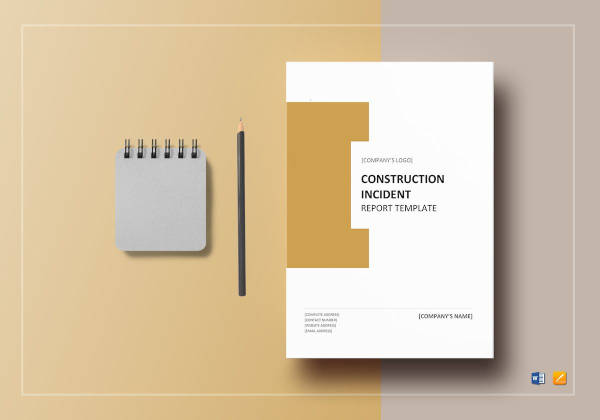
IT Incident Report Template
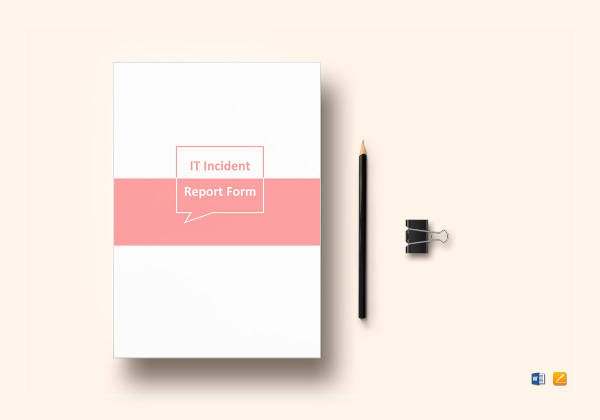
Workplace Incident Report Template
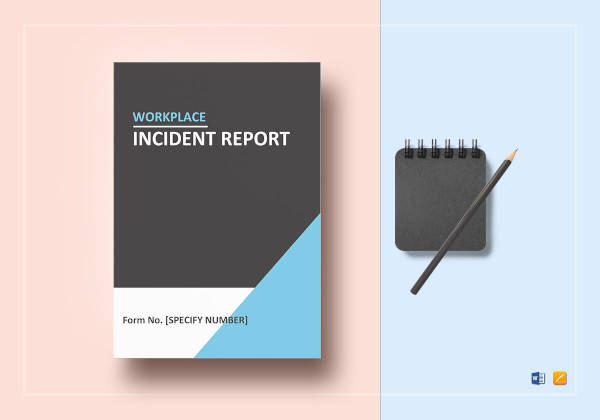
Free Incident Report Template
Free Accident Incident Report Template
Free Blank Incident Report Template
Sample Incident Report Template
Workplace Incident Report Template
Security Incident Report Template
Behavior Incident Report Template
Simple Construction Incident Report Template
Simple Security Incident Report Template
Incident Report Letter In Office Template
Incident Report Letter In Hospital Template
Incident Report Letter in Workplace Template
Incident Report Letter Template
Incident Report Form Template
Workplace Incident Report Template
School Incident Report Template
General Incident Report Template
IT Incident Report Template
Personal Incident Report Form Template
Individual Incident Report Form Template
Equipment Incident Report Template
HR Incident Report Template
Security Incident Reports
IT Security Incident Report
Information Security Incident Report
Security Incident Response Report
Employee Incident Report Examples
Employee Occupational Incident Report
Non-Employee Incident Report
Employee Behavior Incident Report
Employee Performance Incident Report
Accident Incident Reports
Employee Accident Incident Report
Accident Incident Investigation Report
Customer Incident Reports
Customer Service Incident Report
Customer Complaint Incident Report
Domestic Incident Reports
Domestic Abuse Incident Report
Daily Incident Report
Daily Fire Incident Report
Environmental Incident Report
Environmental Incident Investigation Report
Fire Incident Report Examples
Fire Department Incident Report
Fire Incident Investigation Report
Hospital Incident Reports
Hospital Patient Incident Report
Laboratory Incident Report
Biological Laboratory Incident Report
Clinical Laboratory Incident Report
Medical Incident Reports
Medical Emergency Incident Report
Employee Medical Incident Report
Nursing Incident Report Examples
Nursing Home Incident Report
Office Incident Report Samples
Dental Office Incident Report
Office Fire Incident Report
Patient Incident Reports
Patient Safety Incident Report
Patient Fall Incident Report
Patient Injury Incident Report
Traffic Incident Report Examples
Traffic Accident Incident Report
Traffic Incident Police Report
Vehicle Incident Reports
Company Vehicle Incident Report
Top 3 Benefits Incident Report?
1. Enhances Safety and Prevents Future Incidents
Incident reporting identifies hazards and breakdowns in existing safety measures, allowing organizations to take corrective actions. By analyzing reports, they can implement changes to prevent similar incidents, enhancing overall safety.
2. Ensures Legal and Regulatory Compliance
Many industries are mandated by law to report certain types of incidents. Effective incident reporting helps organizations comply with these regulations, avoiding legal repercussions and fines. It also provides documented evidence that can be crucial in legal proceedings.
3. Improves Organizational Learning and Performance
Incident reports serve as a learning tool, offering insights into areas that need improvement. They foster a culture of transparency and continuous learning, where mistakes are analyzed, and lessons are shared, leading to improved processes, training, and overall performance.
What to Include Incident Reporting?
When compiling an incident report, it’s crucial to include comprehensive and clear information to ensure the report is useful for understanding what happened and preventing future incidents. Here’s what to include:
1. Basic Information
- Date and time of the incident
- Location where the incident occurred
- Name and contact details of the person reporting
2. Incident Details
- Detailed description of the incident
- Type of incident (injury, property damage, security breach, etc.)
- Conditions leading up to the incident
3. Persons Involved
- Names and roles of individuals involved
- Contact information for all parties involved
- Witness accounts and contact details
4. Injuries and Damages
- Description of any injuries sustained and the severity
- Details of any property or equipment damaged
- Immediate medical care or emergency services provided
5. Response to the Incident
- First aid or emergency responses initiated
- Notifications made (to management, emergency services, etc.)
- Steps taken to secure the area or mitigate further risks
6. Investigation Findings
- Initial findings or theories about the cause of the incident
- Any contributing factors or unsafe conditions
7. Actions Taken
- Immediate corrective actions taken to address the cause
- Long-term measures proposed to prevent recurrence
8. Documentation and Evidence
- Photos, videos, or diagrams of the incident scene
- Relevant documents or records (maintenance logs, training records)
- Any other supporting evidence
9. Follow-Up Actions
- Recommendations for future preventive measures
- Assigned responsibilities for implementing recommendations
- Scheduled review dates to assess the effectiveness of actions taken
Details to Include in the Event Description
- First-person point of view (POV) – Incident reports are always written in the first person narrative (i.e., from the perspective of “I,” “me,” “we,” “us”). Make sure to mention the details of how you happened upon the incident. It is important to take note of where you were before, during, and after the incident.
- Blow-by-blow explanation – Provide a witness account of the events as they unfold. Mention as much detail about the incident and the events that led to the actual incident. Make sure to include details such as addresses in your report. You may also see Examples of Short Report
- Names – Mention your full name and the full names of those involved. This is essential, especially if more than one person has the same first or last name. This would also clearly indicate the role of each person in the incident. You may also see Sales Report Example & Samples
- Date and time – State the exact date and time concerning the incident. This greatly helps in eliminating possibilities in future investigations regarding the incident.
- Numbers – Take note of other important details such as license plates and ID numbers. Personal contact information is also required for any follow-up investigation that may be conducted.
- Precision – Describe the incident as to what it was. Do not include any detail that you are unsure of or skeptical about. Mentioning something that you are not sure of may cause misinterpretation of the situation.
- Clarity – Avoid using difficult or confusing words. Use straight-to-the-point and concise descriptions.
- Honesty – Factual descriptions based on what actually happened greatly helps in figuring out the nature and cause of the incident. Be sure to write the truth as it may prove to be the key factor in establishing the truth behind the incident. You may also see Financial Report Examples
Functions of an Incident Report
- For information – It informs the institution of the event or occurrence. It aims to be helpful, to some extent, in preventing the incident from happening again. It also informs people of what can be done should the event recur. Always make sure that the information stated in your incident report is as accurate as possible in order to have a clear understanding of what actually happened and of the events leading to the incident. You may also see Monthly Report Examples
- As basis or evidence – Incident reports are most often used as proof in making claims or as evidence in the event of an investigation. In most cases, this happens when claiming for health or accident insurance. Properly identifying persons involved and how events unfolded are key elements for evidence in claims. You may also see Sample Activity Reports
Elements of a Good Incident Report
Here are the procedures one must follow in the event of an incident.
- Obtain and fill up the correct company form. Make sure to follow the instructions contained in the forms to avoid having to file them again. Remember it takes less time to do things right than to explain why you did it wrong. You may also see Quality Report Examples.
- Fill out the forms as soon as possible. Do this in while you still have a fresh recollection of the event and the nature surrounding the incident in your mind, and the minds of those involved.
- Stick to the basics. Use basic and concise statements mentioning information regarding the incident, such as time, date, and location. Make sure to mention your name and the name of the key persons involved in the incident.
- Be objective. Always make statements that are factual. Do not include possibilities and what-ifs in your report. Explain the events as they actually happened as vividly as you can remember. You may also see Status Report Examples
Incident Report Submission
A thorough and well written incident report is not done until you check it again. It is important to get the facts right the first and the only time. This helps avoid unnecessary waste of time in resubmitting a report or getting the results after a report in case of insurance claims. You may also see Visit Report Examples & Samples.
- Check if all the names of the persons involved were spelled out correctly. Be wary of names with “Jr.” or “II” as they may be crucial in any future investigation. Also, make sure that the full names of the persons involved are mentioned and correctly spelled out for reference. You may also see Investigation Report Samples and Examples
- Double-check if the numbers filled in are correct. Any missing information may prove to be important in an investigation. Missing or incomplete details may lead to a different conclusion.
- Ensure that the time and date, as well as the location of those involved, are accurate. This may help resolve any issue in the future.
- Review your incident report and ensure the correct address or location of the incident. This may fall under technicality but is also very important in any further investigation.
In any type of incident report, it is vital to get the facts right to aid those who will review the report and give a clear picture of the actual incident and of the events that took place. This would help them in giving out any decisive action or grant applicable claims regarding the incident. You may also see Project Report Examples & Samples
Remember that it always pays to be extra careful in making an incident report as it could very well make or break a case being filed for claims. You may also see Marketing Report Examples
Example incident reports on the page are available for download in case you may need additional help in drafting or making one. Most of the downloadable sample incident reports are in PDF format. You would need a PDF reader to access this type of file. You may also see Free Report Examples & Samples.
FAQs
Who Can Use an Incident Report?
An incident report is used during investigation purposes and it can be used by authorities who want to create a report of an incident as well as by any employee who wants to report an incident he/ she has witnessed. It can also be an organization to raise awareness about an incident.
What are the Elements of a Good Incident Report?
Following are the elements of a good incident report:
- It contains accurate and specific data
- It is objective and supported by facts
- It covers all essential questions related to the incident
- It includes photos, diagrams, and illustrations as supporting evidence.
What are the Benefits of Using Incident Reports?
Following are the benefits of using incident reports:
- It improves communication between everyone involved
- It allows an incident to be recorded from different perspectives
- It allows investigations to progress faster
- It comes in handy during legal action.
What are the Different Examples of Incident Reports?
Following are the different examples of incident reports:
- Fire incident report
- Accident incident report
- Domestic incident report
- Employee behavior incident report
- Security incident report
- Workplace incident report.



